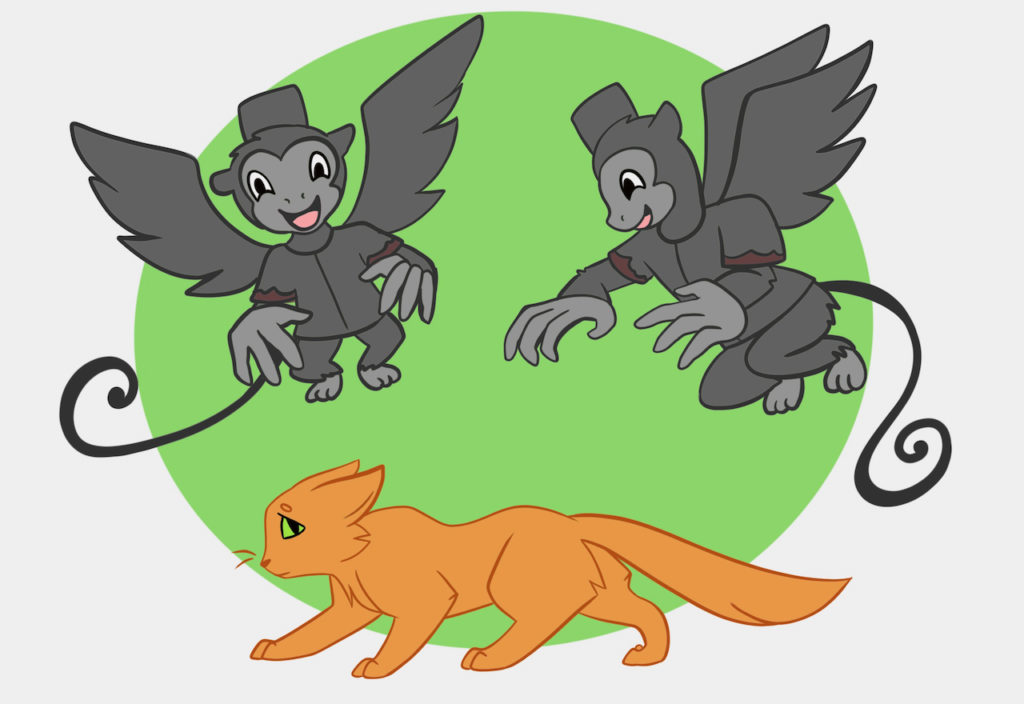
Imagine being suddenly snatched up by a giant from your favorite chair. You are lifted up into the air, your legs flailing as you try to maintain your balance. Scary, huh?
Some of the more exciting scenes in fantasy movies include the hero or heroine being snatched up and taken away. In the Wizard of Oz, a troop of flying monkeys swoop down and grab up Dorothy and her dog, Toto, taking them to the castle of the Wicked Witch of the West. A giant ape carries Ann Darrow up the Empire State Building in the movie “King Kong”, as the audience shrieks and squeals.
Picking up your cat can be frightening for him. He often has little warning before he is airborne. He feels helpless and scared. But, you say, I pick my cat up all the time and he does not seem to mind. In certain circumstances though, he might redirect his fear as aggression and bite or scratch you, if you try to pick him up, say, to move him away from the vacuum cleaner.
Okay, so maybe you can coax him to go where you need him to by using treats or a target stick. But there still will be times when picking up your cat is necessary – for example, you may need get him out of the way of a car. What can you do?
Picking Up Your Cat Step-by-Step
The “Pick Up” behavior was a by-product of training Gus, a feral cat caught in a live trap when he was three years old.
When you picked Gus up, he often would thrash and flail in your arms, biting and scratching. He responds well to clicker training so I wondered if I could teach him to be picked up, in the same way he learned to sit and target.
We broke the behavior of being picked up into the following steps.
- Kneel next to him on the floor and touch him where I would if I were going to pick him up. Give the verbal cue “UP”, then, click and treat.
- Slide my arms around him like I was going to pick him up. Give the verbal cue “UP”, then, click and treat.
- The next step was to actually to start to pick him up briefly, lifting him off the ground, with the cue “UP”. Click then treat.
- Finally, I would pick him up off the ground for a few seconds while saying “UP”. I would click when he was off the ground, then treat him when I placed him back on the ground.
- I “shaped” the behavior by picking him up and holding him longer and longer, always rewarding him afterwards.
Unlike most of the time we train our cats, “UP” does not require the cat to actively choose to do something. It involves a passive response. The click marks that the cat is being lifted up and will be rewarded in the near future. But, the “click” can also make your cat feel good.
Like Pavlov’s dogs, who salivated when they heard a bell, the “click” is a classically conditioned response. Once the click has been consistently associated with food or another reward, it ultimately triggers the same pleasurable emotions as the reward.
The “Pick Up” command was so successful that I taught all my cats this. Gus still squirms sometimes when the hold is taking him somewhere he does not fancy going… but, the biting has stopped! And he is rewarded for his patience with treats or head rubs when we arrive at our destination.
Although your cat is not in control of the situation when being picked up, if he hears the cue and the click, he knows what is going to happen, and can anticipate something good which should reduce his fear and anxiety.



1 thought on “Picking Up Your Cat”